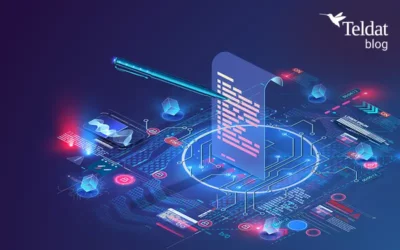 The advent of 5G technology is revolutionizing the way we connect and communicate. With faster connection speeds and increased network capacity, 5G holds the key to unlocking innovation across diverse industries, such as healthcare, transportation, and beyond.
The advent of 5G technology is revolutionizing the way we connect and communicate. With faster connection speeds and increased network capacity, 5G holds the key to unlocking innovation across diverse industries, such as healthcare, transportation, and beyond.
However, this technological advancement is not without its challenges, and one of the most critical aspects to consider is cybersecurity. This article will explore how 5G is transforming connectivity, and the threats and security measures associated with it.
The transformative impact of 5G
5G is not just a mere upgrade for previous mobile networks. It offers a multitude of benefits that extend far beyond mere download speed improvements. Here are some of the areas where 5G is having a transformative impact:
- Higher speed and capacity: 5G offers connection speeds that can be up to 100 times faster than 4G networks. This allows for real-time data transmission, an absolute necessity for cutting-edge applications like autonomous vehicles and remote surgical procedures.
- Lower latency: Reduced latency in 5G networks allows for faster communication between devices. This crucial feature is paramount for mission-critical applications, such as telemedicine and security systems.
- Mass IoT device connection: 5G enables the seamless connection of a substantial number of devices simultaneously, which is essential for the growth of the Internet of Things (IoT).
Cybersecurity Challenges in the 5G World
Although 5G offers an array of benefits, it also brings unprecedented cybersecurity challenges that demand our attention. Here are some crucial threats that need to be addressed:
- Interception and eavesdropping attacks: The increased speed and capacity of the 5G network can be exploited for intercepting and spying on communications. Cybercriminals may potentially take advantage of these features to illicitly obtain confidential data or spy on conversations.
- Advanced DDoS attacks: Due to their increased bandwidth, 5G networks are susceptible to highly sophisticated distributed denial of service DDoS attacks. These attacks have the potential to cripple critical systems.
- Vulnerabilities in IoT devices: As the number of IoT devices increases, the attack surface also expands. Poorly protected devices can serve as entry points for network intrusions.
- Risk of data manipulation: The low-latency capabilities of 5G have opened the door to revolutionary applications like real-time control of autonomous vehicles. Hackers who can manipulate data in real time, could potentially cause accidents or damage.
Security Measures in the 5G Era
Cybersecurity in the 5G era is fundamental to ensure that this technological revolution is safe and beneficial. Here are some key measures that organizations and individuals should take:
- Robust Encryption: End-to-end encryption is vital for safeguarding the privacy of communications. It is imperative for organizations to implement strong encryption protocols and keep them up to date.
- Firewalls and Advanced Security Solutions: Utilizing firewalls and advanced security solutions can assist in detecting and preventing cyberattacks before they can cause any harm.
- Updates and Patching: Regularly updating all devices and software with the latest security patches is fundamental in preventing known vulnerabilities.
- Cybersecurity Training: Educating and raising awareness among employees is essential. Organizations should educate their staff about best security practices.
- Risk Assessment: Regular risk assessments and penetration testing can help identify vulnerabilities and weak points in the network infrastructure.
In addition to the measures mentioned above, here are some additional tips to improve cybersecurity in 5G:
- Use a firewall to safeguard the network against external attacks.
- Deploy a reliable antivirus and antimalware software to protect your computer systems from malicious programs.
- Enable to use the advantages of two factor verification authentication (2FA) for important accounts.
- Monitor the network and computer systems to promptly detect any potential threats.
- Have an incident response plan in place in case of a cyberattack.
5G has the potential to completely transform our lives and work, but it also comes with significant cybersecurity risks. It is essential for organizations and individuals to fully grasp these threats and take proactive measures to protect themselves. Cybersecurity must be at the forefront of both the implementation and use of 5G technology, allowing us to fully leverage its benefits while ensuring the security of our data and systems in this new era of connectivity.
Source & other points.
https://www.kaspersky.es/resource-center/threats/5g-pros-and-cons
https://www.ibm.com/blogs/think/es-es/2023/04/13/ciberseguridad-en-redes-y-servicios-5g/
https://ciberseguridad.com/guias/nuevas-tecnologias/redes-5g/
https://www.incibe.es/ciudadania/blog/tecnologia-5g-y-riesgos-de-ciberseguridad
https://www.softwareone.com/es-co/blog/articles/2022/01/17/la-tecnologia-5g-y-la-ciberseguridad


























